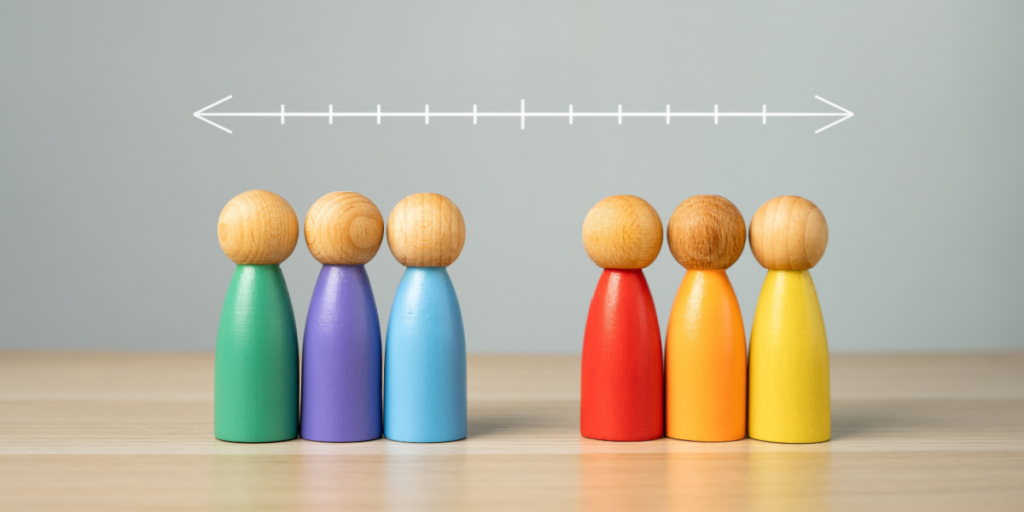The explanation is rather peculiar.
Others are reading now
“It’s the Left’s fault!”
“No, it’s the Right’s!”
“That’s the problem with you Lefties — you always blame others!”
“That’s rich — you Right-wingers always do the same!”
The political terms “left” and “right” are used almost every day — in political debates, casual conversations among colleagues, and while discussing current events over dinner.
Also read
But where do these terms actually come from?
They date back more than two centuries, and their origin lies not in ideology but in the physical seating of lawmakers during one of Europe’s most turbulent revolutions.
Beginnings in 1789
The labels first appeared during France’s National Assembly in 1789. Supporters of the monarchy and the Church gathered to the right of the Assembly president, while revolutionaries sat to his left.
Baron de Gauville, one of the deputies, later explained:
“We began to recognize each other: those who were loyal to religion and the king took up positions to the right of the chair so as to avoid the shouts, oaths, and indecencies that enjoyed free rein in the opposing camp.”
Also read
When a new Legislative Assembly replaced the original in 1791, the seating divisions persisted. Reformists sat on the left, moderates in the centre, and defenders of the old constitution on the right. This symbolic split continued into the National Convention of 1792, though the right side became nearly empty after the fall of the Girondins in 1793.
A new political order
After the Thermidorian Reaction of 1794, radical left members were excluded, and the practice of seating by faction was abolished.
However, following the Bourbon Restoration in 1814–1815, the arrangement returned. Ultra-royalists again took the right, constitutional monarchists the centre, and independents the left.
The vocabulary of “centre-left,” “centre-right,” and “extreme” wings soon developed to describe growing ideological diversity.
This same pattern inspired other nations. In the United States, Thomas Jefferson — an admirer of the French Revolution — linked the French “côté droit” (right side) and “côté gauche” (left side) to natural political divisions.
Also read
Writing to his friend the Marquis de Lafayette in 1823, Jefferson remarked that political opposites existed in all societies,
“whether called Aristocrats and democrats, côté droite or côté gauche, Ultras or Radicals, Serviles or Liberals.”
Post-1848 France
Following the upheavals of 1848, French politics saw two clear rivals: democratic socialists, who used red flags, and reactionaries, who used white ones.
By the time the Third Republic began in 1871, the terminology of left and right had become embedded in party identities. Groups like the Republican Left, Centre Right, and Extreme Left began to formalize their platforms.
Interestingly, despite its name, the Radical Left — founded in 1881 — was often closer to the Centre Left in outlook than to the more revolutionary Extreme Left.
Also read
The modern meaning
By the early 20th century, “left” and “right” had evolved into broad political identifiers tied to ideology.
“Left” became associated with republicans, reformists, and later socialists, while “right” referred to conservatives and defenders of tradition. What began as a seating choice became a global shorthand for political identity.
By 1914, France’s Left included Unified Socialists, Republican Socialists, and Socialist Radicals. The Right, meanwhile, continued to occupy the traditional side of the chamber.
The use of these terms spread rapidly across Europe and beyond, though local meanings often differed.
Ideological contrast
The two labels did not carry equal weight. Many conservatives rejected the left–right spectrum altogether, calling it divisive.
Also read
Reformists, however, embraced it as a way to frame political struggle. Philosopher Émile Chartier noted in 1931,
“When people ask me if the division between parties of the Right and parties of the Left, men of the Right and men of the Left, still makes sense, the first thing that comes to mind is that the person asking the question is certainly not a man of the Left.”
In Britain, the terms entered common debate during the late 1930s, particularly amid divisions over the Spanish Civil War.
Defining class and power
By mid-century, sociologist Robert M. MacIver offered a clearer definition in The Web of Government (1947). He wrote that the Right “is always the party sector associated with the interests of the upper or dominant classes,” while the Left represents “the lower economic or social classes.” The centre, he said, reflected middle-class interests. For MacIver, the Right defended privilege and hierarchy, while the Left fought for equality and expanded opportunity.
Over time, these terms — born from the literal sides of a room — came to define the global language of politics.
Also read
Sources: Encyclopaedia Britannica, Reuters, BBC, AP


